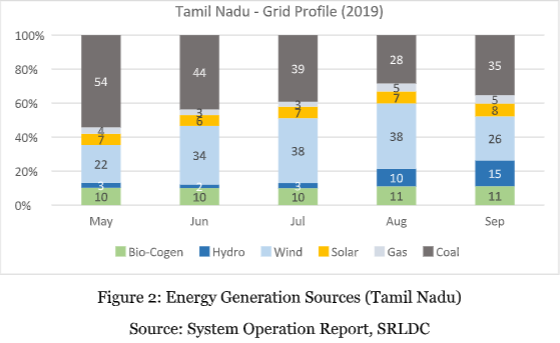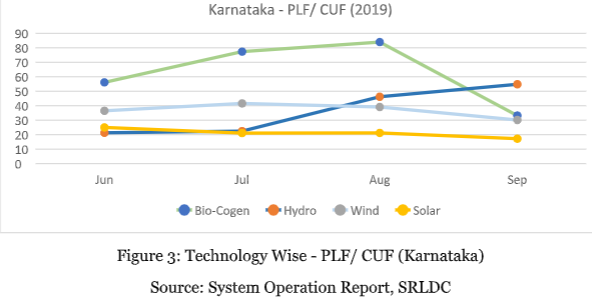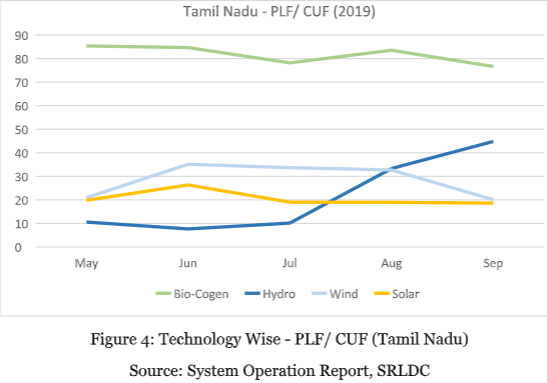

Key learnings can be drawn from renewable rich states of Karnataka and Tamil Nadu, which have been managing a high share of clean energy in their grid networks due to availability of hydro and biomass power.
New Delhi: Recent months have seen several unprecedented events affecting the society as well as the economy. The energy sector has witnessed a sharp dip in its demand, impacting the utilities all along the value chain. Phase-I of the lockdown period (March 24 and April 19, 2020) saw a 25 per cent decrease in the power demand compared with the same period of the previous year.
A similar fall was observed in the peak demand, which reduced from 160 GW to 115 GW. During this period, coal power generation was adjusted, which increased the share of renewable power in the grid. A parallel and important event has been the discovery of competitive tariffs in bids requiring supply of round the clock (RTC) renewable power with an annual utilization factor of 80 per cent (four times the typical value of a solar / wind project). These trends indicate shifting to a ‘New Normal’, both in terms of individual behavior to tackle Covid-19 as well as in providing higher quantum of despatchable green power.
Over eighty per cent of the renewable energy basket in India is attributed to wind and solar having variable (and seasonal) characteristics. To serve the changing demand patterns of consumers and accommodate an increasing share of clean energy, technologies with firm characteristics like biomass and hydro would be required. In this regard, key learnings can be drawn from renewable rich states of Karnataka and Tamil Nadu, which have been managing a high share of clean energy in their grid networks due to availability of hydro and biomass power.
Data for the monsoon period of the year 2019 (May to September) shows over 75 per cent penetration of clean power in the state of Karnataka, with equal share from both variable (solar and wind) and firm (hydro 1 and biomass) sources. A kind of complementarity can be observed between hydro and biomass, with biomass plants (where fuel can be stored) operating at higher load factors during the lean-hydro months. Similarly, in Tamil Nadu, over half the grid supply during the period May to September 2019 was attributed to clean power, within which, two-thirds was contributed by variable wind and solar, with the remaining share
coming from firm technologies (hydro 2 and biomass-cogeneration). Here also, a synergy was observed in terms of loading factors of these technologies based on their seasonal availability.
It is important to note that even with a large installed base of biomass projects (20 GW, including cogeneration), the utilization of assets in terms of power generation is sub-optimal. Similarly, small hydro power sector in India has been stagnating, with the total installed capacity still below the 5 GW mark, and projects operating at half the expected PLF levels (average of 22%). If prudently utilized, these assets would be able to generate power equivalent to 80 GW of solar, or 60 GW of wind projects with RTC characteristics. The co-benefits would include increased share of green power in the grid, assimilation of variable solar and wind power (lesser curtailment), provision of RTC power at competitive tariffs and reduced dependence upon fossil fuels.
As such, firm-clean technologies like hydro and biomass needs to be promoted with measures like explicit procurement mandates, provision of low-cost funds and tax-credits and extending grid balancing incentives. This measures shall help India meet its International Climate Commitments as well as Sustainable Development Goals.
[1] Including large hydro power
[2] Including large hydro power
[This piece was authored by Dr. Sapan Thapar, Associate Professor, Department of Energy & Environment, TERI School of Advanced Studies]
















